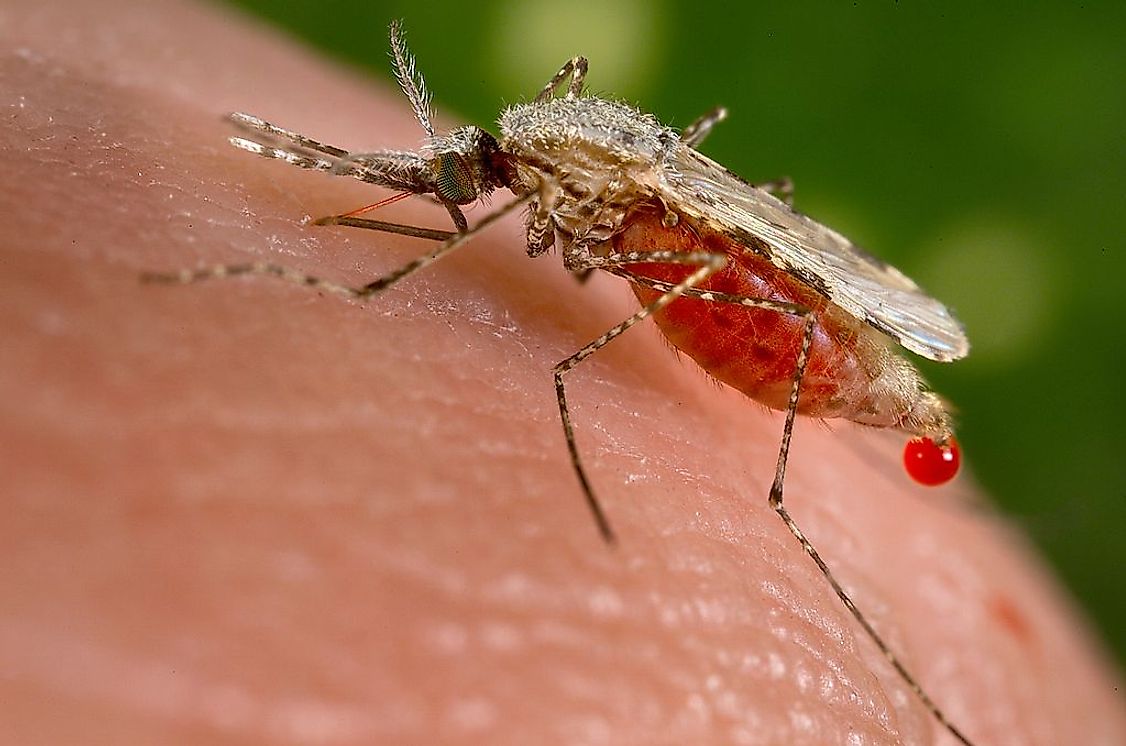Countries With The Highest Rates Of Malaria

Malaria is one of the leading causes of death in many developing nations throughout Africa, South America, and Asia. Infected female anopheles mosquitoes transmit this parasite to humans. The deadliest malarial parasite is P. falciparum which causes malignant malaria characterised by chills, headache, vomiting, and fever during early onset, often followed by death. Health professionals diagnose the infection by testing blood for antigens. One of the most widely used methods is called Rapid Diagnostic Testing and provides a diagnosis in 2 to 15 minutes. Delays in treatment result in severe illness and death. Some countries experience higher rates of malaria than others, most in Africa. This article inspects the factors that influence the spread of the disease.
Countries with the Highest Rates of Malaria
Transmission And Diagnosis Of Malaria
Malaria is transmitted via the female Anopheles mosquito which thrives in tropical and subtropical regions. It is very rarely, if ever, found at high altitudes, in deserts, or during cold seasons. In 2015, 214 million new cases of malaria were reported with approximately 438 thousand deaths. These numbers are from diagnosed cases, and many infections go undiagnosed. Malaria is preventable and treatable. The majority if these new cases and 90% of the resulting deaths occur in Africa. Uganda, for example, reported the highest number of new infections with 10.3 million. This figure is followed by Ghana with 8.8 million and another 6.3 million in the Democratic Republic of Congo.
Factors Leading To The Spread Of The Disease
Why do healthcare professionals diagnose so many new malaria infections throughout Africa every year? In addition to previously mentioned countries, there have also been 6.1 million new cases in Burkina Faso, 5.8 million in Kenya, and 4.7 million in Zambia. The overwhelming response to the spread of malaria is poverty. In countries where the majority of people live in poverty, infections like malaria are far more likely to occur. The construction of homes in the rural areas of developing countries does little to protect against mosquitoes entering and the families cannot afford mosquito nets to hang over beds. These individuals are unable to pay for transportation and healthcare facilities and even if they manage to get a formal diagnosis, are often unable to pay for medicines. Lack of education about malaria prevention, like covering water stores to prevent mosquito breeding, also contributes to why these countries face high rates of malaria. Malnutrition is rampant in these areas as well which makes immune systems weaker.
Effects On Newborns and Children
Malaria infections cause a tremendous burden on the health systems in these countries and primarily affects children who are infected in 1 of 3 ways. When the mother is infected during pregnancy, the parasite is passed along to the fetus. This event results in premature birth and low birth weight which decreases the chance of survival. A rapid and severe case of malaria can also cause seizures, coma, or respiratory infection, all of which lead to death. Finally, children who become infected repeatedly are more likely to suffer from anemia which, in turn, weakens their immune system.
Other countries with high numbers of new malaria infections are Pakistan (4.3 million), Ethiopia (3.9 million), Malawi (3.7 million), and Niger (3.5 million).
Other Contributing Factors in the Spread of Malaria
Another cause of the spread of malaria can be attributed to global climate change. Climate affects infectious disease. This fact is true for viruses, bacteria, and parasites. Changes in temperature, precipitation, and humidity levels will perpetuate the breeding season for these mosquitoes. Given that global climate change increases the temperature in the above-mentioned countries and that the parasite-carrying mosquitoes thrive and multiply in hot weather, it is a reasonable conclusion that malaria will only continue to infect millions of people annually. If individuals, communities, and nations do not come together to reduce the contributors to global climate change, the effects will be detrimental to the world population.
Countries With The Highest Rates Of Malaria
| Rank | Country | Reported Cases of Malaria (in millions) |
|---|---|---|
| 1 | Uganda | 10.3 |
| 2 | Ghana | 8.8 |
| 3 | Democratic Republic of Congo | 6.3 |
| 4 | Burkina Faso | 6.1 |
| 5 | Kenya | 5.8 |
| 6 | Zambia | 4.7 |
| 7 | Pakistan | 4.3 |
| 8 | Ethiopia | 3.9 |
| 9 | Malawi | 3.7 |
| 10 | Niger | 3.5 |











